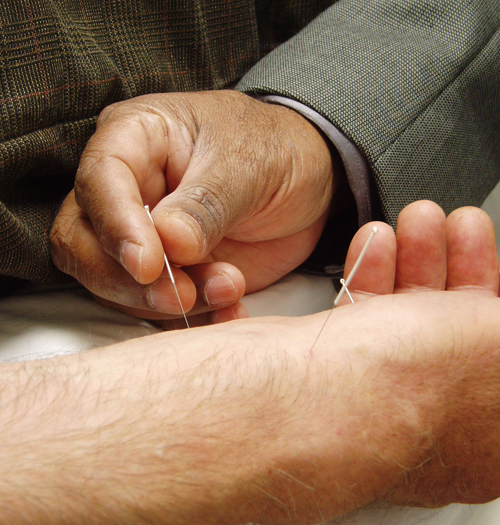How does acupuncture work? The role of S1 remapping
Acupuncture is a medical therapy that originated in China several thousand years ago and is rooted in a complex practice ritual based on a philosophy that predates our current understanding of physiology. Despite its long history, though, the intervention itself, particularly when coupled with electrical stimulation, significantly overlaps with many conventional peripherally-focused neuromodulatory therapies. A large body of clinical research has explored acupuncture for chronic pain disorders, demonstrating that acupuncture may be marginally better than sham acupuncture (e.g., non-inserted needles) in reducing pain ratings, but with small effect size. Still, several questions remain: how exactly does acupuncture work? Is acupuncture any better at improving physiological (i.e., objective) outcomes for chronic pain?
Even after so much clinical research, controversy persists as to whether or not acupuncture differs from placebo. Sham (non-inserted needle) acupuncture, which certainly sends inputs to the brain via skin receptors, is a sham device coupled with specific ritual and may thus produce a stronger placebo effect than, for example, a placebo pill. However, such symptom improvements may occur due to completely different physiological mechanisms compared to real acupuncture, whose mechanisms may more specifically target pathophysiology.
Most chronic pain disorders lack established biomarkers or objective outcomes. However, for carpal tunnel syndrome (CTS), a neuropathic pain disorder, local peripheral nerve-based outcomes are well established. These outcomes reflect physiology of the median nerve, which suffers from ischemia and fibrosis due to CTS, an entrapment neuropathy. Moreover, it’s not just the nerve in the wrist that’s affected in CTS. Research has clearly demonstrated that the brain, and particularly the primary somatosensory cortex (S1), is re-mapped by CTS. Following up on our pilot acupuncture neuroimaging study, our recent study is the first sham-controlled neuroimaging acupuncture study for CTS. Our results demonstrated that both real and sham acupuncture improved CTS symptoms. However, objective/physiological outcomes (both at the wrist and in the brain) showed specific improvement for acupuncture, compared to sham acupuncture, and were linked to long-term improvement in CTS symptoms.
 Basic Acupuncture by Kyle Hunter. Public domain via Wikimedia Commons.
Basic Acupuncture by Kyle Hunter. Public domain via Wikimedia Commons.Our results are analogous to a recent sham-controlled study of albuterol inhaler for asthma, which demonstrated that, while sham acupuncture and placebo inhaler was as effective as an albuterol inhaler in terms of symptom reduction, objective physiological outcomes (i.e., spirometry to assess forced expiratory volume) demonstrated significant improvement only for albuterol. Hence, sham acupuncture may “work” by modulating known placebo circuitry in the brain. In contrast, real acupuncture may improve symptoms by re-wiring the primary somatosensory cortex, in addition to modulating local blood flow to the peripheral nerve in the wrist. In other words, both peripheral and central neurophysiological changes in CTS may be halted or even reversed by electro-acupuncture interventions that provide more prolonged (compared to sham acupuncture) and regulated input to the brain – something that future longer-term neuroimaging studies should explore.
Interestingly, in S1, different body areas are represented in spatially distinct cortical regions. In fact, this body-specific map may serve as the basis for a crude form of “acupoint specificity” for acupuncture – a controversial topic, for sure. In the current study, we evaluated this speculative hypothesis by also comparing acupuncture local to the most-affected wrist with acupuncture targeting the opposite ankle. Our results suggested that both local and distal acupuncture improve median nerve function, and that neuroplasticity in S1 subregions specifically targeted by these local and distal acupuncture interventions (i.e. wrist and leg S1 cortical representations, respectively) were linked to improvements in median nerve function at the wrist following therapy.
While our research is an important step toward understanding how acupuncture works, more research linking objective/physiological and subjective/psychological outcomes for acupuncture analgesia needs to be performed. Once we better understand how acupuncture works to relieve pain, we can better optimize this therapy to provide effective, non-pharmacological care for chronic pain patients.
Featured image: 20100928 AlphaCityAcupunks-8 by Marnie Joyce. CC BY 2.0 via Flickr.
The post How does acupuncture work? The role of S1 remapping appeared first on OUPblog.

Oxford University Press's Blog
- Oxford University Press's profile
- 238 followers



